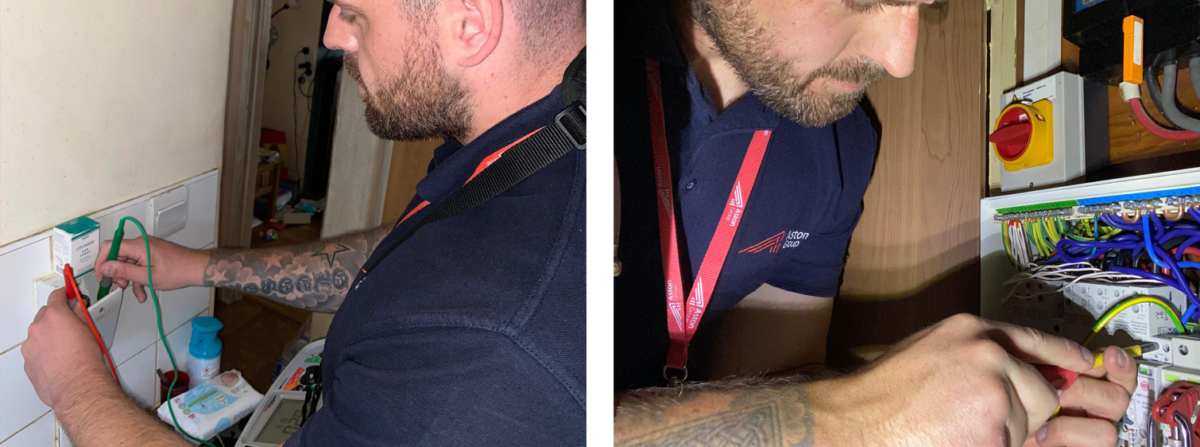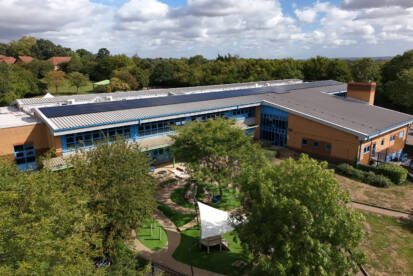Domestic Electrical Safety and Upgrades
Ongoing safety checks and improvements to more than 10,000 local authority homes
- Electrical surveys for more than 10,000 homes
- Installation of fire detection and alarm systems
- Addition of Surge Protection Devices (SPDs) and Arc Fault Detection Devices (AFDDs)
- Resident communication
- Compliance reporting via our ACIMS facilities management platform
Having entered into a long-term contract with Aston Group in 2012, the London Borough of Waltham Forest’s Housing Department commissioned us to conduct electrical inspections across 10,037 homes on a rolling five-year basis.
The objectives of this ongoing project are to identify and address any electrical safety concerns, ensure compliance with the latest regulations and implement necessary upgrades to enhance energy efficiency and safety.
A critical aspect of this project involved upgrading fire detection and alarm systems to meet LD1 and LD2 standards. These are part of the BS 5839-6:2019 code of practice for the design, installation, commissioning and maintenance of fire detection and fire alarm systems in domestic premises.
LD1 is the highest level of protection and requires fire detection in all rooms and areas where a fire could potentially start, such as living rooms, bedrooms, kitchens and hallways. This ensures that residents get the earliest possible warning of a fire so there is time to evacuate safely.
LD2 requires fire detection in escape routes (such as hallways and landings) and high-risk rooms where fires are most likely to start, such as kitchens and living rooms. This standard strikes a balance between safety and practicality, providing substantial protection while focusing on areas with the highest fire risks.
In addition to these fire safety upgrades, the work included installing new Surge Protection Devices (SPDs) and Arc Fault Detection Devices (AFDDs).
As part of our relationship with Waltham Forest we have helped identify optimal products that offer the best value from reputable manufacturers. This proactive approach minimises the likelihood of repairs, faults, and safety risks, while also enhancing our negotiation capabilities with suppliers.
The Challenge
One of the main challenges was to efficiently manage and prioritise inspections and upgrades across a large number of properties, each with unique electrical systems and requirements. Ensuring compliance with the latest regulations and safety standards was paramount, requiring meticulous planning and execution.
It is also important to minimise disruption to residents during inspections and upgrades. Maintaining regular communication with both residents and the local authority has been a significant undertaking over the years, requiring meticulous organisation and planning.

The Solution
To address these challenges, Aston Group has adopted a five-step approach to the ongoing works.
Risk assessments and prioritisation
We thoroughly reviewed property records and conducted risk assessments to prioritise properties based on factors, such as age, condition and use.
Detailed inspection survey
A comprehensive inspection survey was developed to cover all necessary electrical components and systems.
We established and approved pre-authorisation protocols for specific tasks, which accelerates project delivery and streamlines instructions. This initiative has significantly reduced the time needed on-site, allowing us to complete jobs within a day or as required.
Coordination with residents
To minimise disruption, we worked with residents to schedule inspections, explaining the process and providing clear instructions regarding access requirements.
Centralised management system
All activities are documented and managed through the Aston Centralised Management System (ACIMS). This provides Waltham Forest Council with real-time access to progress reports and ensures transparency at every stage.
On-site inspections and upgrades
Our team of certified electricians conducts thorough on-site inspections to assess the condition of electrical systems. The majority of the works involve, but are not limited to:
- Testing the entire electrical system, in order to produce Electrical Installation Condition Reports (EICR/EIC) for each property.
- Upgrading fuseboards.
- Installing smoke alarms that meet the LD1 standard, with an average of 6-8 detectors per property.
- D-clipping any exposed cables.
- Upgrading sockets to include USB points.
No access procedure
We implement a comprehensive process with residents to maintain the highest standards of compliance. This includes sending a 28-day notification letter, followed by a 7-day reminder, with this sequence repeated three times. Once this process is completed, the property is referred to the client. However, our efforts do not conclude there. We explore various strategies and initiatives to facilitate access and ensure the property meets compliance standards at the highest level.

The Results
The first round of checks have been completed and all upgrade works adhere to relevant regulations and standards, ensuring both safety and compliance. The initial inspections and upgrades took between 4 to 8 hours per property.
Since Aston Group took on the electrical inspections and upgrade programme for Waltham Forest Council’s Housing team, there has been a significant increase in both compliance and resident satisfaction.
Initially, the programme had an average of 800-1000 properties out of compliance each year. This has been reduced to less than 250 properties, which is largely unavoidable due to property access issues. This improvement in compliance highlights the effectiveness of Aston Group’s systematic approach and commitment to the project.



